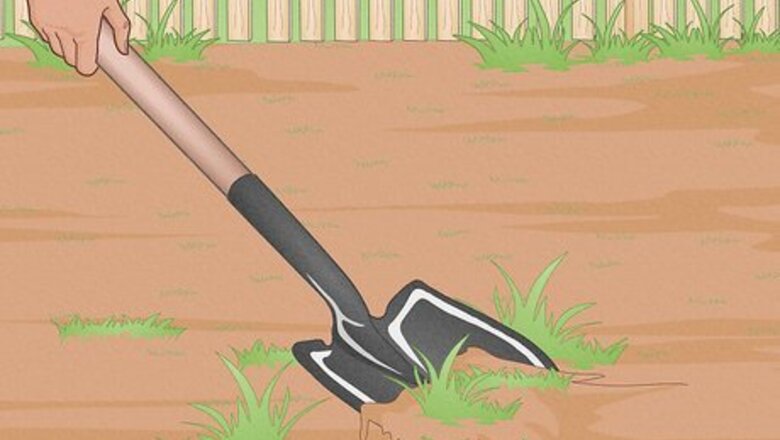
views
Preparing Soil for Tilling and Planting
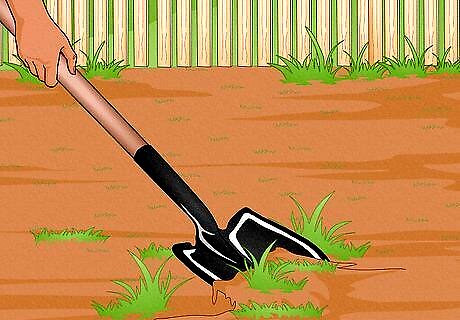
Remove existing sod, plants, and weeds. To make the job of tilling easier and more effective, it’s important to remove any grass or plants that are already growing in the soil you want to till. The purpose of tilling is to prepare the soil for new plants, so you start by removing the old growth. Use a shovel to dig into the ground around the roots of existing plants or weeds. Start a few inches (several centimeters) away from the plant and dig in at a 45-degree angle toward the center of the roots. Sever the roots with the shovel and pull the plants out by hand. Wear gardening gloves to do this. To remove sod, you can use a shovel to dig out small patches at a time, use an herbicide to kill the lawn, use a sod cutter, or kill the lawn by depriving it of light. If there are dead plants, you can leave them in the area to be mulched up and add organic matter to your garden.
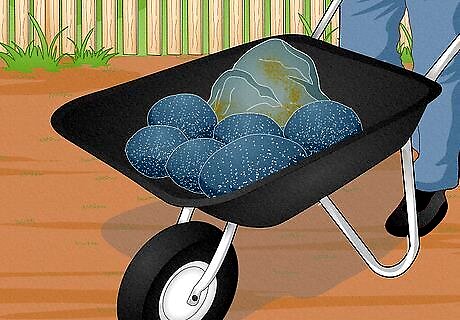
Remove obstructions. Rocks, large stones, tree roots, and other obstructions make it difficult to till land. Large rocks especially get in the way of the tiller, so it’s best to move them before you till. With a wheelbarrow, walk up and down the land you want to till. Look out for rocks, roots, and other items that aren't soil. Place anything you find into the wheelbarrow. These objects are also obstructions for seedlings that are trying to grow, so your plants will have a better chance if the land is clear.
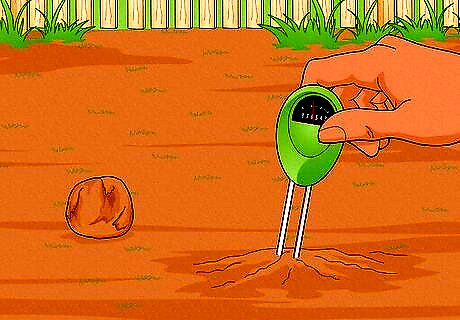
Test and evaluate the soil. Different plants need certain soil conditions to thrive, and if your soil doesn’t meet those needs, then your plants may die. Two qualities you should evaluate for are soil type and pH. You can test pH with a test kit that you can buy at garden stores, home and hardware stores, and online. To determine the soil type: Take a hose and soak a small section of the soil in your garden. Grab a small handful of soil and squeeze it into a ball. Place the ball somewhere well-ventilated but protected from rain. Let the ball dry out for 24 hours. When dry, pick up the ball of soil. A tight ball indicates clay. A ball that crumbles or loses its shape is mostly sand. A crumbly ball that loosely holds its shape is loam, which is ideal. For a more accurate pH and soil type test, take a sample of your soil into your county extension office (in the US), and have them send it in for analysis. This is usually done for free or a small fee.
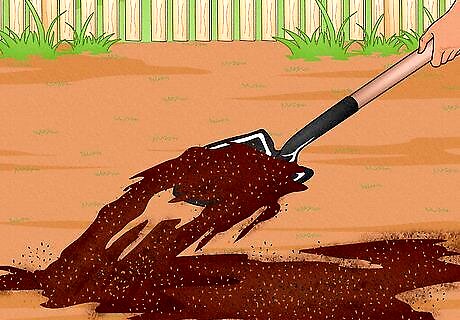
Amend the soil. In order to make the conditions more favorable for your plants, you can amend the soil with certain organic matters to make it more suitable for growing. For instance, you can add specific soils to create loam, and can add different things to adjust the pH. For a garden with a high pH and acidic soil, sprinkle lime or wood ash over the soil before tilling to balance the pH. For a garden with a low pH and alkaline soil, sprinkle sawdust, peat moss, or compost. For a garden with sandy or clay-like soil, add 2 to 4 inches (5 to 10 cm) of aged compost, manure, peat moss, or shredded leaves. Nearly any soil will benefit from the addition of organic compost, leaf mold or composted manure.
Starting a Motorized Tiller

Set the depth adjuster. Most backyard tillers are front-tine tillers, and the depth to which these till is controlled by a metal part that slides along behind the tines. To keep track of your depth, move the depth adjustor up or down. For the first pass with the tiller, the depth adjustor should be all the way up, as you don’t want to go too deep on your first till. If the depth adjustor is up all the way, you don’t have to tip the tines down as far to get the pin off the ground, meaning your pass will be shallow.
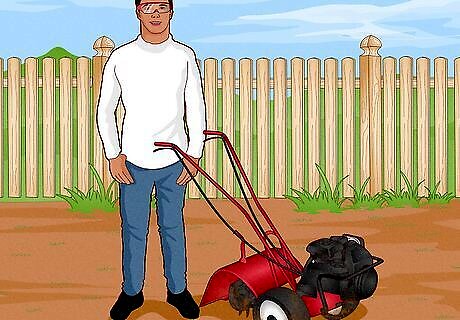
Put on personal safety equipment. Always wear safety glasses when tilling, as rocks, dirt, and debris can be thrown around by the tines. It’s also a good idea to wear long sleeves and pants to protect your arms and legs from projectiles. Heavy or steel toe boots are also recommended to protect your toes from the tines. Never wear sandals or open-toed shoes when operating a tiller, lawn mower, or other machine with blades.
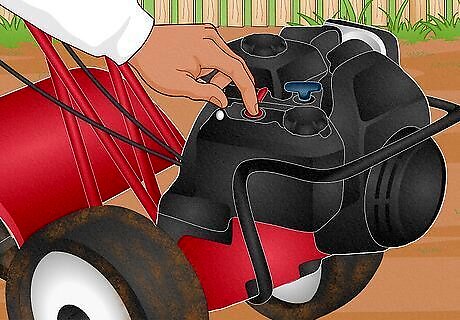
Turn the machine on. Motorized tillers have an On and Off switch located on the engine. While you can't flip the switch and turn the tiller on, the machine does have to be on before you can start the motor.

Open the throttle. Tillers are motor-powered machines, and before you can start the engine, you have to open the throttle. This will allow fuel into the engine. Many tillers will have a rabbit and turtle on the throttle to indicate the position. When you're starting your tiller, push the lever to the rabbit to open the throttle.
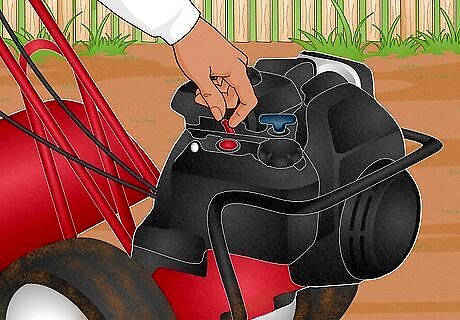
Engage the choke. The choke is a valve that controls air intake in the engine. In order to start your engine, you want to engage the choke and close the valve, as this will provide a richer fuel supply to the engine, making it easier to start. If the engine gets too much air when it’s trying to start up, it won’t have enough fuel to get going.
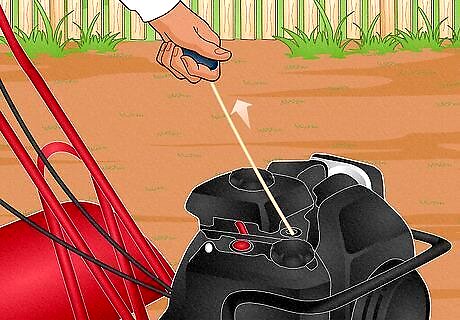
Pull the cord to start the engine. Locate the recoil start on the engine. Grab the handle and pull back in one motion to start the engine. If it doesn’t work on the first try, let the cord pull back and try again. As soon as the engine has started up, disengage the choke.
Tilling Prepared Soil
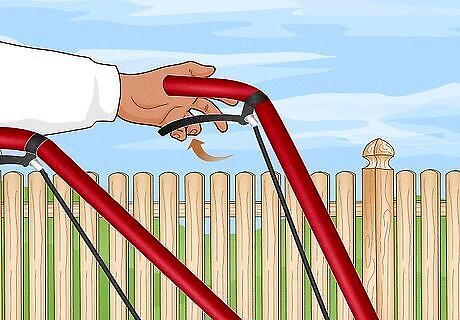
Pull up the levers under the handles. Once the motor is started, you'll notice that the tines still aren't turning. To engage the tines, squeeze the levers under each handle to spin the tines. On a tiller with the tines in front, the forward motion is controlled by you. To prevent the tiller from moving forward when the tines are engaged, you'll have to pull back on the handles while pushing down to lift the tines out of the soil and hold the machine in place.
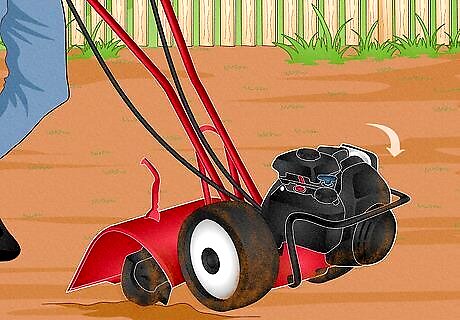
Tip the tiller forward. When you want to move forward and till the ground, raise the handles upward to tip the tines downward into the soil. As you push the tines into the ground, they will begin to churn the soil. Walk forward at a normal walking pace, keeping the tiller tipped at the same depth. As the tiller pulls itself forward, the tines will continue breaking up all the soil they come into contact with.

Make passes on alternating rows. When you get to the end of your first row, push the machine forward in a curving motion to turn it around. Rather than trying to till the soil in the row directly beside you, move over by one row to till your next pass. Backyard tillers aren't always easy to turn, and tilling every other row will make it easier to maneuver the machine.
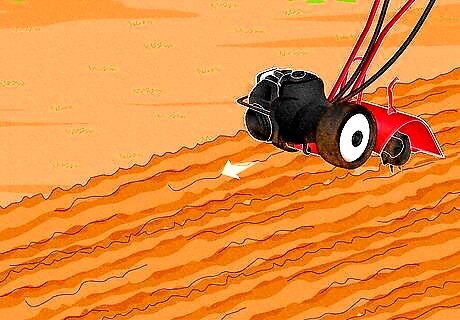
Go over the area again in the opposite direction. Once you’ve gone over each row and tilled the entire area once, repeat the same process, working in the opposite direction. For instance, if you tilled in horizontal passes the first time around, do vertical passes this time. On the second pass, push the tines farther into the soil to till at a deeper depth. Changing your direction and making two passes with the tiller will ensure you fully till all the soil and blend in all the organic matter.

Turn the machine off. When you’ve finished tilling the soil, release the levers under the handles to stop the tines from moving. Turn the machine off by flicking the switch on the engine.
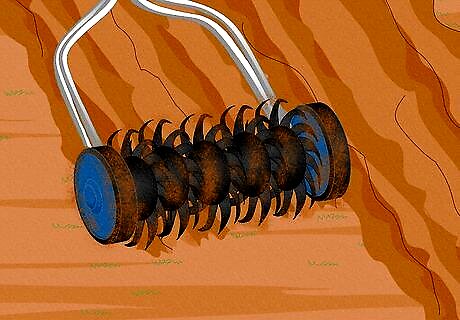
Use a hand tiller instead. A hand tiller is a manual, non-motorized tiller. Some hand tillers have a bladed wheel that let you push the tiller forward when it’s in the ground, but others have to be moved from one spot to another. To start, push the blades or spikes into the soil to the right tilling depth for your garden, usually between 6 and 8 inches (15 and 20 cm). For a tiller with a bladed wheel, push the tiller forward while it’s in the ground. This will rotate the blades and till the soil. For a tiller without the wheel, twist the tiller as you pull it straight out of the ground. Move the tiller over to an adjacent patch of soil, insert the spikes and repeat.













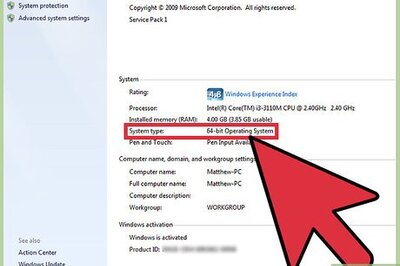




Comments
0 comment